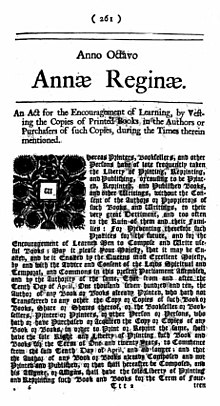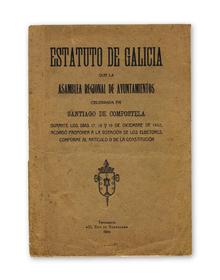Triqonometriyanın əsas düsturları
Triqonometriyada triqonometrik eyniliklər triqonometrik funksiyaların daxil olduğu bərabərliklərdir. Həndəsi olaraq isə bu eyniliklər bir və ya bir neçə bucağın müəyyən funksiyalarını ehtiva edən eyniliklərdir.
== Pifaqorun triqonometrik eynilikləri ==
Sinus və kosinus arasındakı əsas əlaqə Pifaqorun triqonometrik eyniliyi ilə verilir:
sin
2
θ
+
cos
2
θ
=
1
,
{\displaystyle \sin ^{2}\theta +\cos ^{2}\theta =1,}
burada
sin
2
θ
{\displaystyle \sin ^{2}\theta }
–
(
sin
θ
)
2
{\displaystyle (\sin \theta )^{2}}
,
cos
2
θ
{\displaystyle \cos ^{2}\theta }
–
(
cos
θ
)
2
{\displaystyle (\cos \theta )^{2}}
deməkdir.
Bu bərabərlikdən sinus və kosinusu tapmaq mümkündür:
sin
θ
=
±
1
−
cos
2
θ
,
cos
θ
=
±
1
−
sin
2
θ
.
{\displaystyle {\begin{aligned}\sin \theta &=\pm {\sqrt {1-\cos ^{2}\theta }},\\\cos \theta &=\pm {\sqrt {1-\sin ^{2}\theta }}.\end{aligned}}}
Bərabərliyin tərəflərini ayrı-ayrılıqda sinusa və kosinusa və ya hər ikisinə böldükdə aşağıdakı eyniliklər alınır:
1
+
cot
2
θ
=
csc
2
θ
1
+
tan
2
θ
=
sec
2
θ
sec
2
θ
+
csc
2
θ
=
sec
2
θ
csc
2
θ
{\displaystyle {\begin{aligned}&1+\cot ^{2}\theta =\csc ^{2}\theta \\&1+\tan ^{2}\theta =\sec ^{2}\theta \\&\sec ^{2}\theta +\csc ^{2}\theta =\sec ^{2}\theta \csc ^{2}\theta \end{aligned}}}
Bu eyniliklərdən istifadə edərək hər hansı bir triqonometrik funksiyanı digəri ilə ifadə etmək mümkündür:
== Çevrilmələr, yerdəyişmələr və dövrilik ==
=== Çevrilmələr ===
=== Dəyişmələr və dövrilik ===
=== İşarələr ===
Triqonometrik funksiyaların işarəsi bucağın rübündən asılıdır. Əgər
−
π
<
θ
≤
π
{\displaystyle {-\pi }<\theta \leq \pi }
və sgn işarə funksiyasını ifadə edərsə,
sgn
(
sin
θ
)
=
sgn
(
csc
θ
)
=
{
+
1
if
0
<
θ
<
π
−
1
if
−
π
<
θ
<
0
0
if
θ
∈
{
0
,
π
}
sgn
(
cos
θ
)
=
sgn
(
sec
θ
)
=
{
+
1
if
−
1
2
π
<
θ
<
1
2
π
−
1
if
−
π
<
θ
<
−
1
2
π
or
1
2
π
<
θ
<
π
0
if
θ
∈
{
−
1
2
π
,
1
2
π
}
sgn
(
tan
θ
)
=
sgn
(
cot
θ
)
=
{
+
1
if
−
π
<
θ
<
−
1
2
π
or
0
<
θ
<
1
2
π
−
1
if
−
1
2
π
<
θ
<
0
or
1
2
π
<
θ
<
π
0
if
θ
∈
{
−
1
2
π
,
0
,
1
2
π
,
π
}
{\displaystyle {\begin{aligned}\operatorname {sgn}(\sin \theta )=\operatorname {sgn}(\csc \theta )&={\begin{cases}+1&{\text{if}}\ \ 0<\theta <\pi \\-1&{\text{if}}\ \ {-\pi }<\theta <0\\0&{\text{if}}\ \ \theta \in \{0,\pi \}\end{cases}}\\[5mu]\operatorname {sgn}(\cos \theta )=\operatorname {sgn}(\sec \theta )&={\begin{cases}+1&{\text{if}}\ \ {-{\tfrac {1}{2}}\pi }<\theta <{\tfrac {1}{2}}\pi \\-1&{\text{if}}\ \ {-\pi }<\theta <-{\tfrac {1}{2}}\pi \ \ {\text{or}}\ \ {\tfrac {1}{2}}\pi <\theta <\pi \\0&{\text{if}}\ \ \theta \in {\bigl \{}{-{\tfrac {1}{2}}\pi },{\tfrac {1}{2}}\pi {\bigr \}}\end{cases}}\\[5mu]\operatorname {sgn}(\tan \theta )=\operatorname {sgn}(\cot \theta )&={\begin{cases}+1&{\text{if}}\ \ {-\pi }<\theta <-{\tfrac {1}{2}}\pi \ \ {\text{or}}\ \ 0<\theta <{\tfrac {1}{2}}\pi \\-1&{\text{if}}\ \ {-{\tfrac {1}{2}}\pi }<\theta <0\ \ {\text{or}}\ \ {\tfrac {1}{2}}\pi <\theta <\pi \\0&{\text{if}}\ \ \theta \in {\bigl \{}{-{\tfrac {1}{2}}\pi },0,{\tfrac {1}{2}}\pi ,\pi {\bigr \}}\end{cases}}\end{aligned}}}
== Bucaqların cəmi və fərqi üçün eyniliklər ==
sin
(
α
+
β
)
=
sin
α
cos
β
+
cos
α
sin
β
sin
(
α
−
β
)
=
sin
α
cos
β
−
cos
α
sin
β
cos
(
α
+
β
)
=
cos
α
cos
β
−
sin
α
sin
β
cos
(
α
−
β
)
=
cos
α
cos
β
+
sin
α
sin
β
{\displaystyle {\begin{aligned}\sin(\alpha +\beta )&=\sin \alpha \cos \beta +\cos \alpha \sin \beta \\\sin(\alpha -\beta )&=\sin \alpha \cos \beta -\cos \alpha \sin \beta \\\cos(\alpha +\beta )&=\cos \alpha \cos \beta -\sin \alpha \sin \beta \\\cos(\alpha -\beta )&=\cos \alpha \cos \beta +\sin \alpha \sin \beta \end{aligned}}}
sin
(
α
−
β
)
{\displaystyle \sin(\alpha -\beta )}
və
cos
(
α
−
β
)
{\displaystyle \cos(\alpha -\beta )}
bucaq fərqlərini "
β
{\displaystyle \beta }
" -nı "
−
β
{\displaystyle -\beta }
" ilə əvəz etməklə və
sin
(
−
β
)
=
−
sin
(
β
)
{\displaystyle \sin(-\beta )=-\sin(\beta )}
və
cos
(
−
β
)
=
cos
(
β
)
{\displaystyle \cos(-\beta )=\cos(\beta )}
faktına əsaslanaraq da tapmaq olar.













































